The epidermal growth factor receptor (EGFR) promotes uptake of influenza A viruses (IAV) into host cells
- PMID: 20844577
- PMCID: PMC2936548
- DOI: 10.1371/journal.ppat.1001099
The epidermal growth factor receptor (EGFR) promotes uptake of influenza A viruses (IAV) into host cells
Abstract
Influenza A viruses (IAV) bind to sialic-acids at cellular surfaces and enter cells by using endocytotic routes. There is evidence that this process does not occur constitutively but requires induction of specific cellular signals, including activation of PI3K that promotes virus internalization. This implies engagement of cellular signaling receptors during viral entry. Here, we present first indications for an interplay of IAV with receptor tyrosine kinases (RTKs). As representative RTK family-members the epidermal growth factor receptor (EGFR) and the c-Met receptor were studied. Modulation of expression or activity of both RTKs resulted in altered uptake of IAV, showing that these receptors transmit entry relevant signals upon virus binding. More detailed studies on EGFR function revealed that virus binding lead to clustering of lipid-rafts, suggesting that multivalent binding of IAV to cells induces a signaling platform leading to activation of EGFR and other RTKs that in turn facilitates IAV uptake.
Conflict of interest statement
The authors have declared that no competing interests exist.
Figures
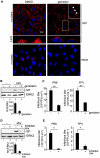
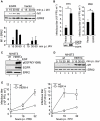
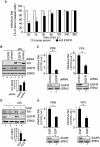

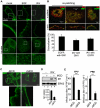
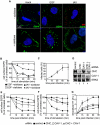
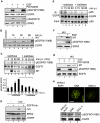

Similar articles
-
Protein Tyrosine Phosphatase SHP2 Suppresses Host Innate Immunity against Influenza A Virus by Regulating EGFR-Mediated Signaling.J Virol. 2021 Feb 24;95(6):e02001-20. doi: 10.1128/JVI.02001-20. Print 2021 Feb 24. J Virol. 2021. PMID: 33361428 Free PMC article.
-
Inhibition of Influenza A Virus Infection by Fucoidan Targeting Viral Neuraminidase and Cellular EGFR Pathway.Sci Rep. 2017 Jan 17;7:40760. doi: 10.1038/srep40760. Sci Rep. 2017. PMID: 28094330 Free PMC article.
-
Influenza A viruses use multivalent sialic acid clusters for cell binding and receptor activation.PLoS Pathog. 2020 Jul 8;16(7):e1008656. doi: 10.1371/journal.ppat.1008656. eCollection 2020 Jul. PLoS Pathog. 2020. PMID: 32639985 Free PMC article.
-
An overview of influenza A virus receptors.Crit Rev Microbiol. 2011 May;37(2):157-65. doi: 10.3109/1040841X.2010.536523. Epub 2011 Mar 26. Crit Rev Microbiol. 2011. PMID: 21438845 Review.
-
Influenza A virus interactions with macrophages: Lessons from epithelial cells.Cell Microbiol. 2020 May;22(5):e13170. doi: 10.1111/cmi.13170. Epub 2020 Feb 18. Cell Microbiol. 2020. PMID: 31990121 Review.
Cited by
-
Dynamics of virus-receptor interactions in virus binding, signaling, and endocytosis.Viruses. 2015 Jun 2;7(6):2794-815. doi: 10.3390/v7062747. Viruses. 2015. PMID: 26043381 Free PMC article. Review.
-
Identification of common biological pathways and drug targets across multiple respiratory viruses based on human host gene expression analysis.PLoS One. 2012;7(3):e33174. doi: 10.1371/journal.pone.0033174. Epub 2012 Mar 14. PLoS One. 2012. PMID: 22432004 Free PMC article.
-
Phosphoproteomic-based kinase profiling early in influenza virus infection identifies GRK2 as antiviral drug target.Nat Commun. 2018 Sep 11;9(1):3679. doi: 10.1038/s41467-018-06119-y. Nat Commun. 2018. PMID: 30206219 Free PMC article.
-
Lipid rafts and pathogens: the art of deception and exploitation.J Lipid Res. 2020 May;61(5):601-610. doi: 10.1194/jlr.TR119000391. Epub 2019 Oct 15. J Lipid Res. 2020. PMID: 31615838 Free PMC article. Review.
-
Human-type sialic acid receptors contribute to avian influenza A virus binding and entry by hetero-multivalent interactions.Nat Commun. 2022 Jul 13;13(1):4054. doi: 10.1038/s41467-022-31840-0. Nat Commun. 2022. PMID: 35831293 Free PMC article.
References
-
- Pleschka S, Wolff T, Ehrhardt C, Hobom G, Planz O, et al. Influenza virus propagation is impaired by inhibition of the Raf/MEK/ERK signalling cascade. Nat Cell Biol. 2001;3:301–305. - PubMed
Publication types
MeSH terms
Substances
LinkOut - more resources
Full Text Sources
Other Literature Sources
Medical
Research Materials
Miscellaneous

